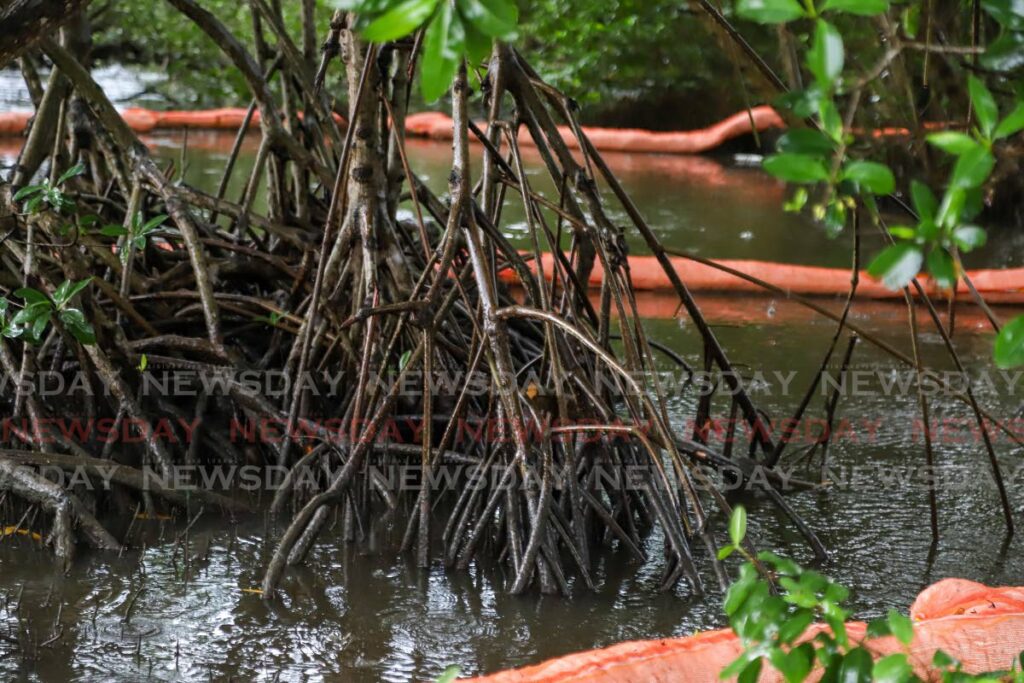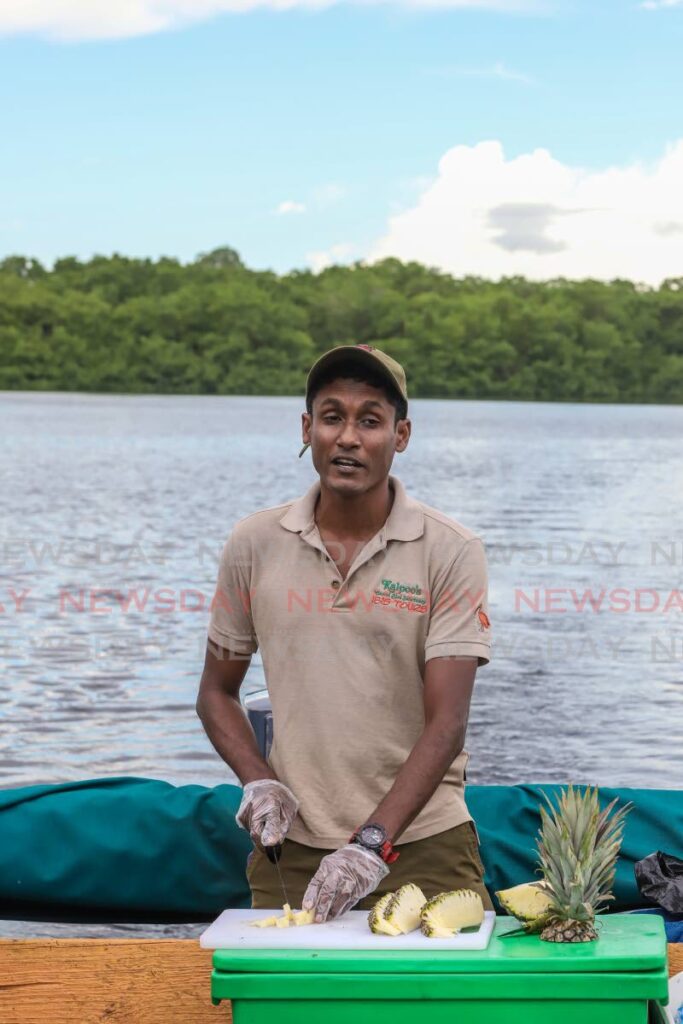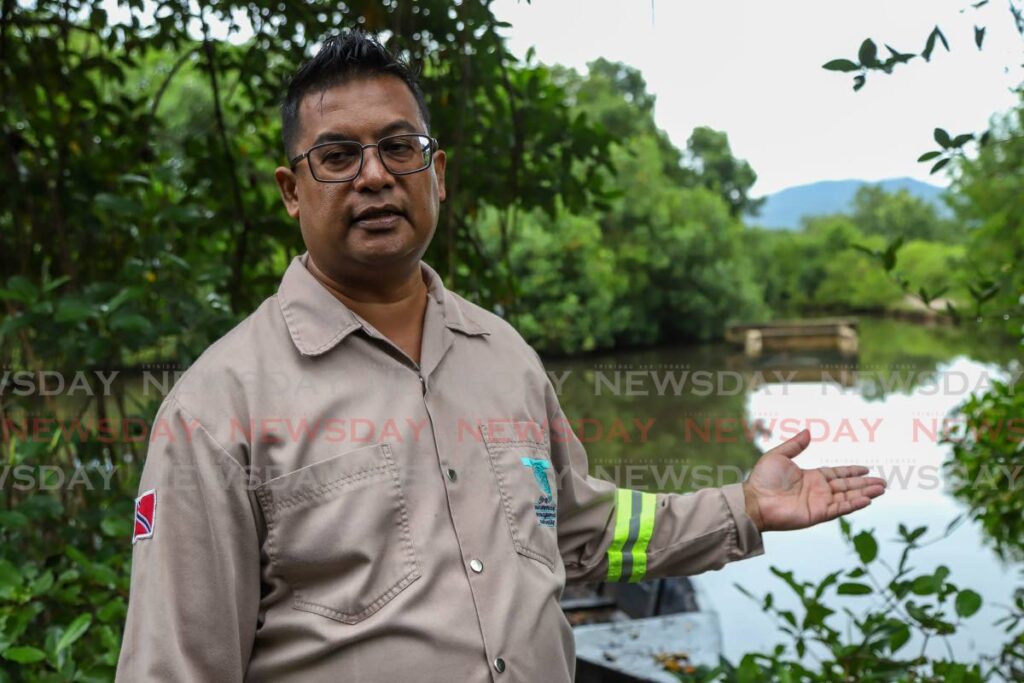EMA to reccomend steps to protect Caroni Bird Sanctuary

The Environmental Management Authority (EMA) says recommendations to prevent a recurrence of a recent spill of a yet-to-be identified substance which seeped into the waterways of the protected Caroni Bird Sanctuary is among proactive measures to be taken.
On Friday, incident commander Steve Lalbeharry, accompanied by Forestry Division officers, took the media on a guided tour of the sanctuary to show that there were no residual signs of the contaminant which was first discovered on August 11, in a drain at the sanctuary's public carpark, near the Uriah Butler Highway.
Lalbeharry identified three potential sources of the leakage of the substance – at the carpark, Frederick Settlement Industrial Estate and the intersection of the skimming drain along channel nine.
The EMA, along with the Institute of Marine Affairs (IMA), the Forestry Division, the Office of Disaster Preparedness and Management (ODPM) and other agencies have been on the ground mopping up any residual substance and contaminated grass and other debris since August 11. The following day, dead fish were observed along channel nine likely as a result of the contaminant.

About three barrels of oily, black substance were suctioned from the carpark drain and other absorbent pads were used to extract the substance from the surface of the water. Three absorbent booms were also placed at the entrance to channel nine to block the flow of the substance and they were still in place on Friday.
Lalbeharry said the EMA is awaiting the analysis of the substance recovered and the investigations are continuing. Anyone found culpable of dumping contaminants, especially in a protected wildlife area, can face substantial fines under the amended legislation.
The Caroni Bird Sanctuary lies west of the Uriah Butler Highway and the 8,300 hectares of wetland is the home of one of the national birds, the scarlet ibis, pink flamingoes, a variety of fresh water fish, snakes, including anacondas, caimans, and numerous others species of animals.
Thousands of eco-tourists visit annually, both locally and internationally, for the guided boat tours along the scenic eight-kilometre north/south channel of the Blue River which leads to the Gulf of Paria. Mangrove trees line the river and branches form a canopy overhead with the odd rainbow boa constrictor adding to the adventurous journey.
Boat tour operators now offer both breakfast and diner tours which patrons can witness flocks of scarlet ibis either leaving the sanctuary in the morning or returning to roost at twilight.
During the tour there was no visible signs to the human eyes or scent of hydrocarbons after the boat left the visitor's docking station. Apart from a handful of discarded plastic bottles and coffee bottles there was no commercial debris trapped in the mangrove roots. Several trees had fallen into the canal and the captain, Navin Kalpoo, had to switch off the engine and manoeuvre the vessel safely across.
Chaguanas West MP Dinesh Rambally, who was on site on August 11, in a letter to the EMA, the IMA and the ODPM on August 19, called for greater monitoring of the sanctuary and a quicker response to potential environmental dangers.
"Any large-scale dumping of oil will severely damage the quality of soil and water such that large tracts of the bird sanctuary will become uninhabitable and its critical ecosystems destroyed. I cannot emphasise enough that our survival cannot be delinked from the ecosystems and natural environment in which we live."
" The Caroni Swamp is so ecologically diverse with its particular collection of fish, insect, other organisms and plant species. It is absolutely unique. As such it is protected by the Ramsar Convention. Loss of, or damage to, this particular environment would mean the loss of things that exist nowhere else and that can never be replaced.
The mangrove forests and wetlands provide nurseries and shelters for fisheries, habitat for a variety of domestic wildlife and migratory birds. They are a source of food for organisms of the lower part of the food chain. Their roots also play an important role in the mineral cycle that is necessary for maintaining the productivity exhibited by the mangrove communities."
Rambally said oil contaminants can be taken up by plant roots, causing damage to the plants over time and affect animals and humans in the long run.

While he commended the EMA and the other agencies for its efforts to clean up the oily substance on August 11, he believed the response was too slow as the scent was first detected by tour operators late August 10 to early August 11, and the vacuum truck began operation around 6.30 pm on August 11.
"My intention in raising this is not to point fingers at any entity but simply to ensure whether we can establish, for the purposes of investigation, whether there was a time lag in relaying information between Forestry Division and the EMA and/or whether there was a time lag in responding to this environmental disaster."


Comments
"EMA to reccomend steps to protect Caroni Bird Sanctuary"